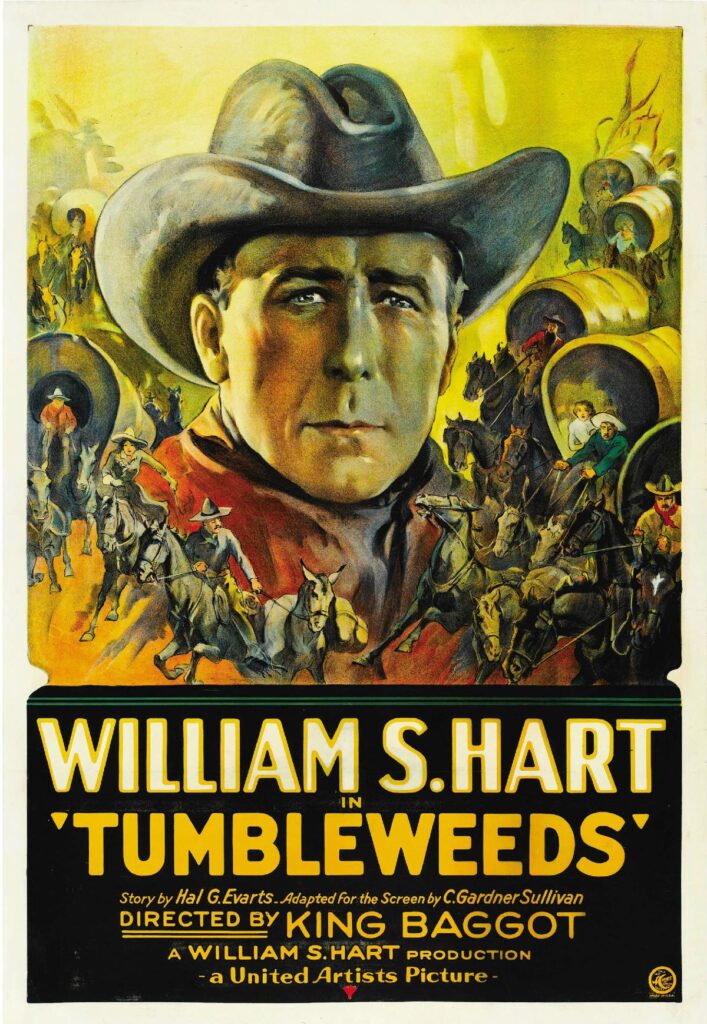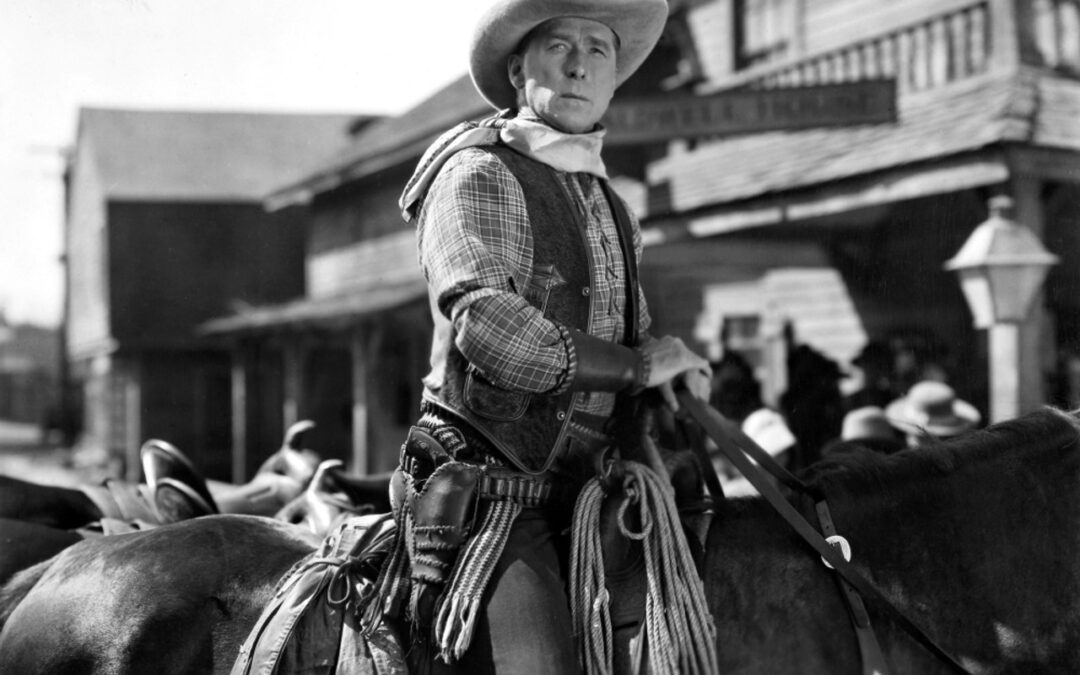Each Monday, I continue to share Western movie reviews. I have now launched a podcast about the making of Westerns and the overall filmmaking process. Click here to listen.
Week 189: Tumbleweeds (1925)

Going through some of William S. Hart’s most popular works, inspired by a book I’m writing about the dawn of the Western genre, I am surprised that Tumbleweeds is considered by many to be his best.
The re-release in 1939, including a new sound introduction from the Western legend, demonstrates further that this is the most acclaimed of Hart’s films. That intro is one of the reasons to watch Tumbleweeds. Hart’s speech may be scripted and a little dramatic for my taste but it’s heartfelt and shows the star’s passion for the genre. The film that follows is a surprisingly light affair, with some scenes that feel like they could have been lifted from a Buster Keaton comedy. Hart leans hard on the humor, choosing even to make his two villains more buffoons than threatening bad guys. Lucien Littlefield as his comic-relief sidekick Kentucky is a highlight but the overall casual tone left me wanting more of the grittiness I witnessed in The Return of Draw Egan. The story itself lacks a punch, a weak narrative woven together around memorable scenes.
The exception, and second best reason to watch Tumbleweeds, is the final land rush sequence. Unlike others staged by John Ford or Ron Howard, the highlight of Hart’s isn’t all the wagons running hard (very impressive staging) but the horsemanship on display from Hart and his stunt doubles. It’s truly some of the finest horse riding ever put on screen and the images remain exhilarating, as if they have not aged a day.
Watched on Paramount Plus


